Loaded by Dylan Jones Captures the Voices Orbiting the Most Important Band of the
Avante-garde Counterculture: The Velvet Underground and Andy Warhol.
Let’s get two things out of the way. One: this is a book review written by a lifelong fan of both books and The Velvet Underground. But that doesn’t shade my labeling them “the most important band of the counterculture.” History took care of that for me. Two: I refer to The Velvet Underground as artists because each member was an artist in their own right.
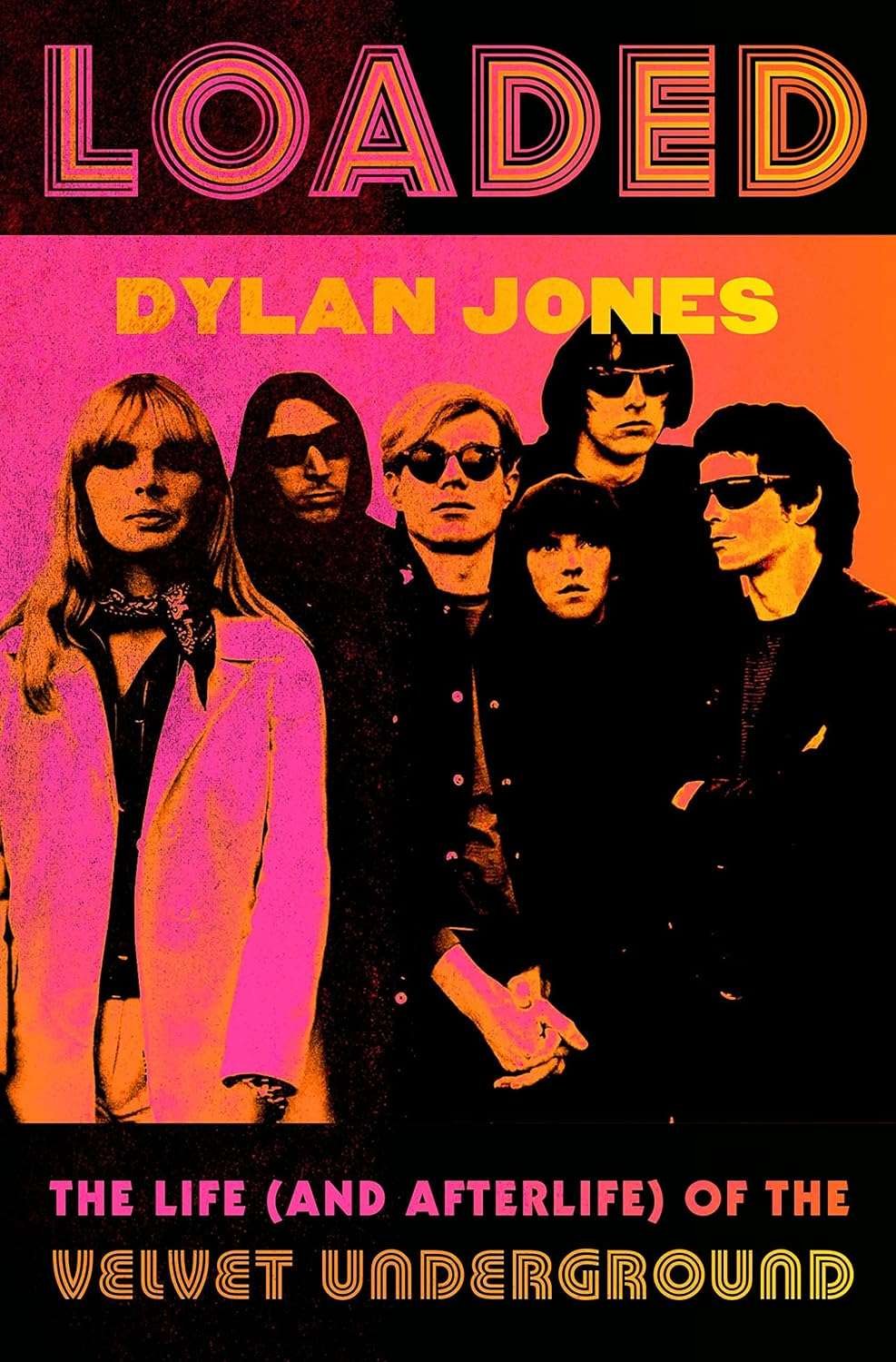
A Fan Is Born
The first time I heard The Velvet Underground was during a Latin study group organized to help failing students – there were three of us – bring our grades up to a C to complete the foreign language requirement and clear the path to graduation. This was my second time cracking my head against declensions and translating the torturously tedious writing of Julius Caser. I kiestered my counterproductive sarcastic attitude and vowed to turn over a new leaf for the next few hours. We met in Karl’s apartment, located in one of Atlanta’s sketchier neighborhoods; his apartment was above a liquor store complete with a fritzing red neon sign that read LIQUOR, crack house adjacent, scant street traffic, but primarily stupefied addicts begging last chance hookers for dope money.
I arrived ten minutes early. While we smoked cigarettes and waited for Lydia, our delinquent study partner, “Sweet Jane” by The Velvet Underground was blaring from a bashed-in box speaker (circa late ‘70s) primarily pumping out the guitar and the lead singer’s strange, detached voice like an off-key, self-conscious revolution. So much so, you could even call it revolutionary. Consider my attention and my groove captured. The song “Heroin” queued up next…
The memory held fast because a few months later, I was given The Velvet Underground box set for my birthday. The one with the Andy Warhol banana teasing you to “peel slowly and see” on cover. Despite the provocation, the banana revealed only another banana. (Sometimes a banana is just a banana.) Thus began my lifelong status as fanboy of The Velvet Underground. Although I prefer to think of myself as having exquisitely good taste in music rather than someone who stalks their favorite artist, waiting for a chance to demonstrate their love in the most preposterous, humiliating, hopefully non-sexual way they can imagine. After exhausting the box set (but still replaying the five CD’s ad nauseum) and committing every lyric to memory, I needed more. My VU jones, if you will, was hollering for a fix.
I wasn’t so much interested in their legacy at this point as I was to hear more of their music. These were pre-internet days, so I wasn’t sure if I knew of all their music. I played each CD on a loop for weeks at a time. Their songs were a revelation, an experience I wanted on a loop. I started hunting for archival recordings of their live shows and eventually struck gold at a little mom-and-pop record store down in Athens, Georgia that specialized in that sort of thing. I do not recall the name of the store but do remember it sold every bootleg recording ever attributed to R.E.M. Ten years later, their filmed performances, video of their semi-permanent residency at Andy Warhol’s studio (“The Factory” in colloquial pop speak), intimate archival jam session recordings, and the archives of Andy Warhol became discoverable again thanks to YouTube.

1993 Reunion
Portrait of an Artist with a House Band
Warhol considered himself a founder of the band but also spoke of himself as a “sponsor” of the band that played daily in his fashionable Factory. The Factory was Warhol’s studio but so much more. It was a hotbed of artistic experimentation, sixties pop stars, vamping models waiting to be discovered, weird poets trapped in the moment, sex shows including homosexuals (illegal in those days), all of them enjoying the best drugs 1960s Manhattan had to offer. Patrons ranged from Hollywood stars like Edie Sedgewick and Marilyn Monroe and wealthy New York society to people living on the street. When he discovered The Velvets, Warhol was already recognized as one of the fathers of Pop Art and the godfather of any avant-garde New Yorker with an original artistic bone in their bodies. He would subsequently be credited for experimental rock music, founding Interview Magazine, authoring numerous books, and one of the very first famous people in the U.S. to live openly as a homosexual. Constantly carrying the burden of a plethora of projects in his back pocket, Warhol made time for the band when fellow filmmaker Barbara Rubin introduced them.
Soon The Velvets were the blue moon in Warhol’s orbit. He took over as their manager and booked gigs they never would otherwise. Warhol’s first act was to incorporate a second woman into the group: German model, actress, drug fiend, and artist in her own right…the pecunious Nico. The act was redubbed The Velvet Underground and Nico. VU was already unusual for their female drummer, Mo Tucker. Nico brought a gloomy, austere quality to their songs. She sexualized the band in a way Mo Tucker, the picture of androgyny, simply could not. At one time or another between 1965 and 1969, Nico became the lover of each band member. (Excluding Tucker since I haven’t found rumor one about them online.)
Warhol’s next step with the band was to feature them in his pop art multimedia series entitled the “Exploding Plastic Inevitables.” This was the most prominent of Warhol’s multi-media works and featured The Velvet Underground and Nico, along with Hollywood’s Edie Sedgwick, Mary Woronov, and Gerard Malanga as dancers.

Lou Reed
A Quote Worth 10,000 Records
Across the decades, gaggles of journalists, musicians, artists, poets, groupies, roadies, and assorted hoi polloi have strung together their opinions on The Velvet Underground using ideas of their very own or borrowing from other critics. The backhanded honesty of Reed’s lyrics. The poetic irony of their playing. They were too East Coast when the West Coast was where everything was happening. Most writers don’t come close to capturing the phenomenon that The Velvet Underground represented and their complicated legacy in art, literature, and – of course – original music. Some were complimentary, some incendiary, some just plain missed the point. Some, like this quote attributed to musician and producer Brian Eno, were just plain prescient, “The Velvet Underground only sold 10,000 copies of their first album but everybody who bought one started a band.”[1]
My corollary: the rest of us never stopped listening. To which any of my neighbors in college could attest. There was only one band playing loud and shrill enough to piss off the neighbors after my night shift.
Loaded: The Life (and Afterlife) of The Velvet Underground
New VU fans are born every day. Others, lifelong fans, still have the jones for more content – whether it’s a bootleg reel-to-reel of a live show at Max’s Kansas City from back in the day or a self-developed picture of Lou Reed voguing his best rock ‘n roll curmudgeon. (Think Sid Vicious back when he was plain old Simon Ritchie in black leather short pants).
Perhaps that’s why Dylan Jone’s new book Loaded: The Life (and After Life) of The Velvet Underground, rings so authentic.
Author, fan, and current editor-in-chief of The Evening Standard, Jones is the latest man-of-letters to attempt cracking the code behind the band’s era-transcending sounds and lyrics right off the street. In Loaded, Jones offers an oral history of The Velvets and perspectives on the group and their music by giving a voice to band members, fans, other musicians, producers, managers, journalists, artists, groupies, and hangers-on orbiting the band from its inception in 1964 to the present day. Jones fills in the blanks between quotes with revealing anecdotes and historical details previously under wraps.

Purple
Andy Warhol: Sponsor, Manager, Not So Much a Fan
“I don’t think Andy really liked any of the music…in fact, I don’t think he liked music in general.” – John Cale, The Velvet Underground
Jones paints an intimate portrait of the band from the early days of Lou Reed’s Long Island teen angst and sexual discomfiture to the first Warhol-produced gig at the American Society of Psychiatrist’s Annual Dinner. Through multiple break-ups and personnel changes to their solo careers and induction into the Rock ‘n Roll Hall of Fame to the present day, Warhol had ambitious plans for the band with everlasting fame as the grand prize.
Loaded excavates the decades of creativity, drug use, rebellion, and the forgotten, misplaced, or drug-fogged memories of the band – from their early days to the sad day in 2013 when Lou Reed’s lifestyle caught up to him in the form of liver disease. To date, maestro electric viola player John Cale is still going strong and collaborating with other musical luminaries. Mo Tucker remains one of the world’s few drummers to play her kit standing up and can be found on far-right wing websites doing her best Marjorie Taylor Green impression (she’s not kidding, folks!). Guitarist Sterling Morrison, who went to college with Reed left the music biz without looking back and became a tugboat captain before giving up his ghost to non-Hodgkin’s Lymphoma. Finally, Nico departed this mortal coil courtesy of a cerebral hemorrhage while on a bike trip through Ibiza. In between are dozens of personal anecdotes – kind and otherwise – that define the band’s legacy to this day.
Unlike the corporeal bodies of the founders, the legacy of The Velvet Underground shows no signs of abating. Their music lured listeners to think in new, unexplored directions; to seek out and demystify the taboo. Their songs relentlessly redefined pop music and culture before such labels existed. In the hive mind of the counterculture movement, pop music, writing and art borne of the political maelstrom of the sixties was only the beginning.
Originality and experimentation, be it with drugs, musical instruments, words, colors, or other people – music was the coveted, magic ingredient. Where The Grateful Dead were representative of the West Coast and its flower children, making free love, and spreading venereal disease gratis – The Velvet Underground portrayed the dark side – the reality – of living on the edge of sanity and withdrawal in a lower east side walk-up. No one would confuse them for The Beach Boys. (Surfing music had no place for drug abuse, prostitution, homelessness, nihilism, fatal loneliness, sexual disorientation, and avant-garde experimentalism. At least not in public.) Although many musicians on both coasts would try, no one could replicate the sound or poetry of The Velvet Underground.
What I found astonishing in Loaded was how many other people felt the same way that I did about their music; and how the art of creating music and the music of creating art were very, very different things. Thanks to Warhol and the gang of writers compelled to write about the band’s legacy, Dylan was able to collect some of the most poignant quotes from those closest to The Velvets in their earliest days playing high school proms to Lou Reed’s sonic abortion of an album with Metallica called “Lulu,” which is only worth the mentioning because it is so terrible.
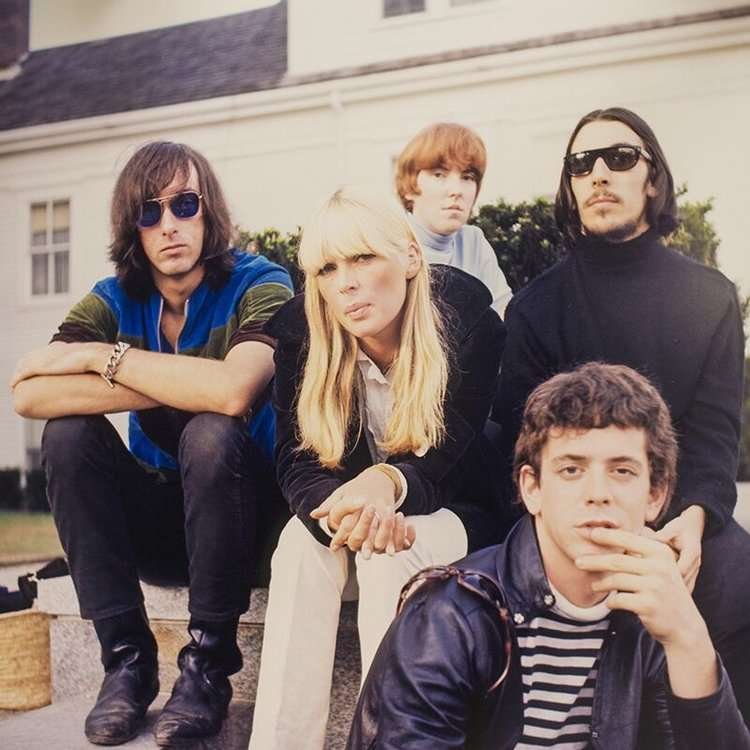
VU2
Every song was an experience or an experiment.
“I only hope that one day John will be recognized as the Beethoven or something of his day.”- Lou Reed, Singer, writer, guitar player of The Velvet Underground
“We think The Velvets is about music, but it’s also the poetry behind the notes and expressing things that ordinary people worry about. It makes you realize you are normal to feel this way. This was completely original from the start. The music is the serum to carry the strength of self-expression, not about the weakness.”- Jan Younghusband, Filmmaker
The Hypnotic Effect of Originality
“The people at The Factory were fascinating, but so was The Velvet Underground. They were these disparate, brilliant people who came together to make this shocking, beautiful, urgent music.”- Danny Fields, Music executive and champion of punk rock
“When a song finally ended there were five seconds before the applause, because the band had hypnotized the audience.”- Todd Haynes, Filmmaker
“The whole scene with Andy Warhol, The Velvet Underground, Ultra Violet, Moondog, the Stooges, it was all fascinating and, I had to admit that I was swept up in it. Obviously, it was during this trip [to New York] that the whole Ziggy Stardust thing began to gel.”- David Bowie
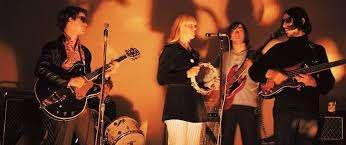
VU and Nico
The Andy Warhol Endorsement
The most famous banana in the world – Andy Warhol’s banana – was sexually provocative but probably squishy and over-ripe under the peel – perfectly sums up the decadent beauty of The Velvet Underground and Nico’s eponymously titled album. Under Warhol’s watchful eye, The Velvet Underground created a 20th-century, post-war classic. One of the most ambitious and feted albums of all time. The Velvet Underground & Nico addressed topics that were highly controversial at the time (many still are): sadomasochism, prostitution, drug use, and the upside of heroin just for starters. Critics excoriated the album and saw it as an elaborate joke from Warhol. The Velvet Underground & Nico was banned from radio due to the overt references to drugs and sex. The album was also 86-ed from the radio as well as in many record stores.[2]
“Lou really channeled Warhol a lot. I think he based his whole cooler-than-thou attitude on Andy, the whole can’t be bothered about anybody, oh dear, people are OD’ing, so what, that’s what life is like on the lower east side.” – Barney Hoskyns, Author
“Warhol had an incredible work ethic and flaunted it to a miffed Reed. “Everyday Andy [arrived at the Factory] ahead of me, and he would ask how many songs I wrote that day,” Reed shares in the documentary, The Velvet Underground by Todd Haynes. “I would tell him 10. He would say, ‘Oh, you’re so lazy. You should have written 15.’” – Lou Reed, The Velvet Underground, documentary by Todd Haynes, quoted in The New York Post, October 25, 2021[3]
“Warhol’s impact on the band was large and immediate. Andy made the band visible in every conceivable way. He gave them legitimacy and visual impact. He called the band’s music rude and crude … like his films. His filmmaking was personified by The Velvets.” – Tod Haynes to the New York Post about The Velvet Underground documentary
“Warhol saw his younger self in Reed and wanted to recapture that vitality. They were both isolated people who kept their innermost thoughts to themselves, and each could empathize with the other`s masked vulnerability. Each had had nervous breakdowns.” – Tod Haynes to the New York Post about The Velvet Underground documentary
“Andy was the producer and Andy was in fact sitting behind the board gazing with rapt fascination at all the blinking lights. He just made it possible for us to be ourselves and go right ahead with it because he was Andy Warhol. In a sense he really produced it, because he was this umbrella that absorbed all the attacks when we weren`t large enough to be attacked… As a consequence of him being the producer, we`d just walk in and set up and did what we always did, and no one would stop it because Andy was the producer. Of course, he didn`t know anything about record production…He just sat there and said, Oooh that`s fantastic, and the engineer would say, Oh yeah! Right! It is fantastic, isn`t it?”- Lou Reed
New York: Manhattan, Not the Bridge and Tunnel Crowd
“Lou Reed’s lyrics could only have come from someone who grew up in the New York area and came of age in Manhattan, who moved and wrote and sang from the pulse of the life of this city.”- Martin Scorsese
“To write the story of The Velvet Underground…you first have to look at New York City, the mother which spawned them, which gave them its inner fire, creating an umbilical attachment of emotion to a monstrous hulk of urban sprawl.”- Lenny Kaye, Guitarist and composer best known as a member of The Patti Smith Group
“My song “Romeo Had Juliette”: “I’ll take Manhattan in a garbage bag/with Latin written on it that says/’It’s hard to give a shit these days’/Manhattan’s sinking like a rock, into the filthy Hudson what a shock/they wrote a book about it, they said it was like ancient Rome.” And I’m trying to make you feel the situation we’re in – feel what it’s like – and I don’t think I’m the only one who feels this way. But what did Alfred Hitchcock say? “It’s only a movie.”– Lou Reed
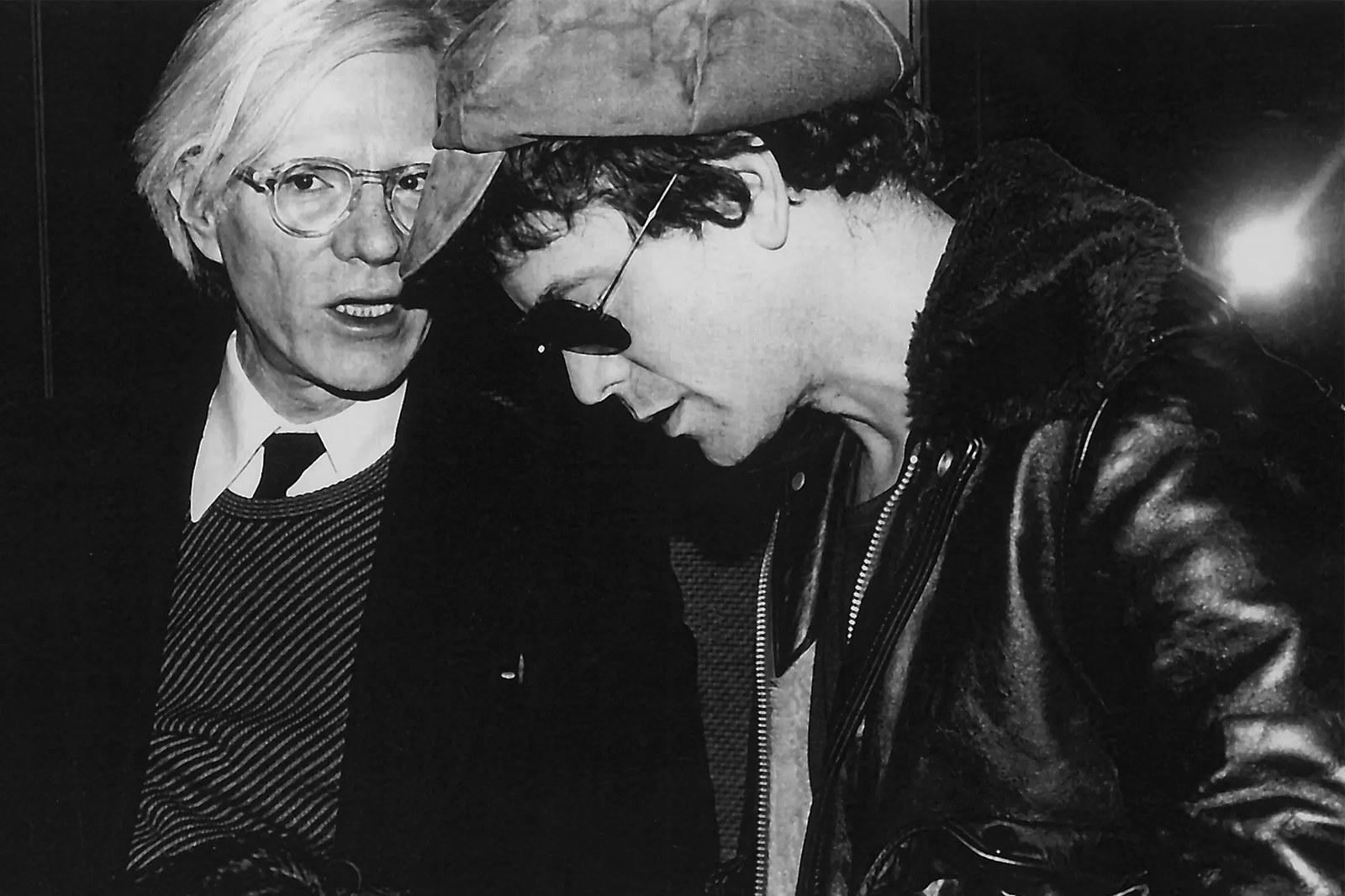
Auteurs of the Avant-Garde
“They were called ‘avant-garde’ and ‘experimental’ – desperate labels trying to control and make sense of the free spirit of this music. Great art is somehow already in the future, showing a place we haven’t been yet. Not just to entertain us to but to make us grow.”- Jan Younghusband, Filmmaker
“They went from writing about heroin to Jesus in such a short time period. Redemption. As a young songwriter, I was fascinated by this. On the third album they looked like mature students. Sterling said that Lou had “Pale Blue Eyes” for years, but it’s only on the third album because Cale would have said,” no fucking way.” – Bobby Gillespie, Drummer, Primal Scream and Jesus and Mary Chain
The Indefinable but Definitely Findable Lou Reed
“He [Reed] taught me that you can take the most sonically aggressive music and put it side by side with some of the most beautiful ballads that anyone has ever written. There was something that Lou started when he did his stuff. …He could do something tender, something very thoughtful, and then something you had to rethink over and over again whether you liked Lou Reed again. His records were so polarizing.” – Nick Cave, Musician, author, polymath
“Lou Reed was one of my earliest drawings. He was always the coolest of the cool. He was a transformer, on a slab coming to life. And that’s how I drew him, as a monster.” – Robert Risko, Illustrator
“Lou was always trying to get cute boys to shit in his mouth. Sometimes they did.” – Duncan Hannah, Painter
Beginning to See the Light
Today, the music of The Velvet Underground is still considered profoundly influential because it was eras ahead of its time (all in pun, dear Swifties). They combined elements of doo wop, rock ‘n roll, avant-garde art, drones, feedback, and their own experimental sounds in combination with different instruments, broken or bespoke technology, and jaw dropping lyrics. (Check out The Gift, in which Reed talks his way through a twisted, but ironically comical short story told over a music bed consisting only of Cale’s electric viola.) Reed’s lyrics are still considered groundbreaking for their complete disdain for what is hip. Since by not caring about cool, The Velvet Underground automatically defined it. In 1960s New York City, that meant overt songs about hardcore drugs (“Heroin” and “White Light White Heat” were the most obvious), sexuality and its manifold permutations (“Femme Fatale,” “Venus in Furs,” and “Take a Walk on the Wild Side” for starters), and, of course, street life in New York City (specifically lower downtown). To say nothing of their look: sunglasses 24/7, dressed all in black, hair a skosh too long on the men, too short on Tucker.
“The Velvet Underground opened for U2 in 1993, so they came on tour with us, although they clearly hated each other. They didn’t like the status of being an opening act. We were very nice to them, transported them, fed them, and looked after them. Cale was the one I liked, and he was a very nice man, he was good fun to be with. He came up to me one day backstage and said, “Where’s Lou?” And I thought, “Oh fuck. Lou’s gone. Lou’s flounced. He’s left the tour.” And I said, “I think he’s in his dressing room.” And Cale said, “No, I don’t care where Lou is. Where’s the loo?”- Paul McGuinness, Entertainment Manager
“Before he passed away, Lou Reed told me that “Lola” was “a big influence on him.” He said it was “reassuring” when he did “Walk on the Wild Side.”- Ray Davies, Musician/Songwriter
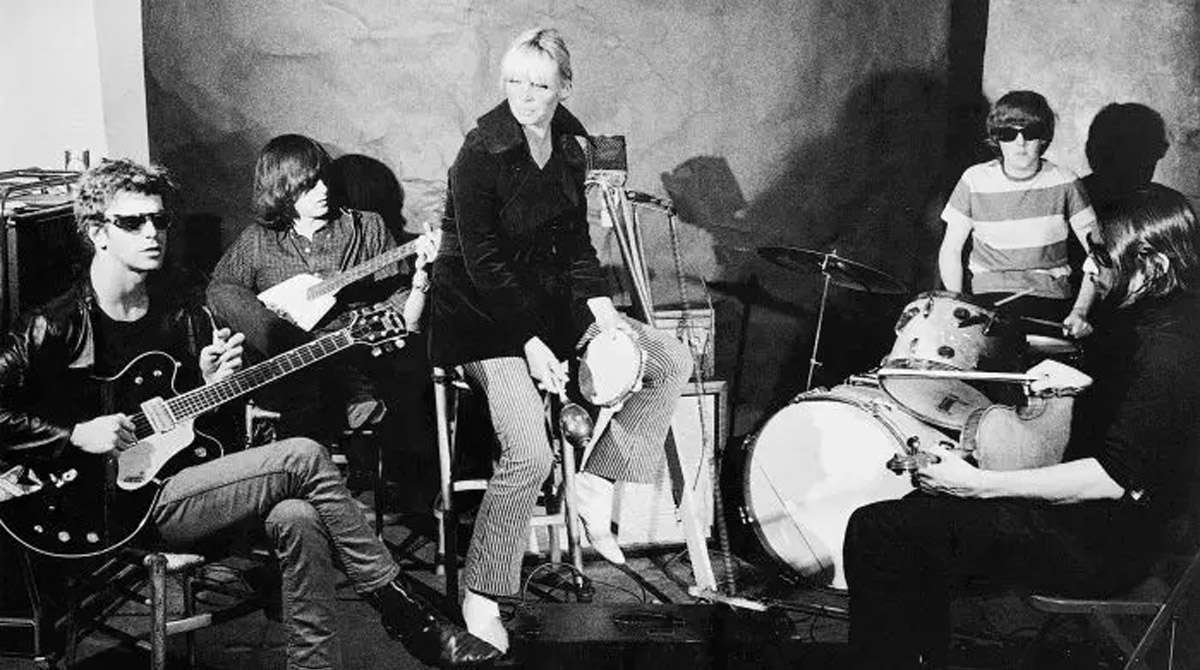
With Apologies to John Lennon
If you’ve seen the movie Yesterday with Himesh Patel, you already know what a world without The Beatles would be like. But where would our society be without the countercultural denizens that comprised and followed The Velvet Underground? If you imagine a world without punk rock proper, then you must also see that world in the harsh, critical light of its ever-evolving, always content-thirsty inhabitants. Take The Velvet Underground out of the picture and you can say goodbye to the music of these artists:
The Strokes
Yo La Tengo
The Cure
U2
R.E.M.
Sex Pistols
Chrissie Hynde
Nick Cave and The Bad Seeds
Joy Division
The Smiths
Jesus and Mary Chain
Sonic Youth
The Pixies
Smashing Pumpkins
The Doors
Tom Waits
David Bowie
Luna
The Modern Lovers
Galaxie 500
Brian Eno
The Stooges
Patti Smith
Talking Heads
Roxy Music
Soundgarden
Pearl Jam
Nirvana
The list could easily go on for pages if I involved Apple Music. Why this is important?
Because without The Velvet Underground, there would be no grunge. No goth. No emo. No classic punk. No hardcore punk. No SoCal punk, anarcho-punk, transgender punk, ska or folk punk. Forget about steampunk and why they even belong on this list. Arguably, rock ‘n roll might have steered completely clear of taboo subjects like heroin and sadomasochism without their influence. The rebellious, nihilistic attitude toward the world, and relentless demand for originality, for authenticity – The Velvet Underground and their fans owned it first.
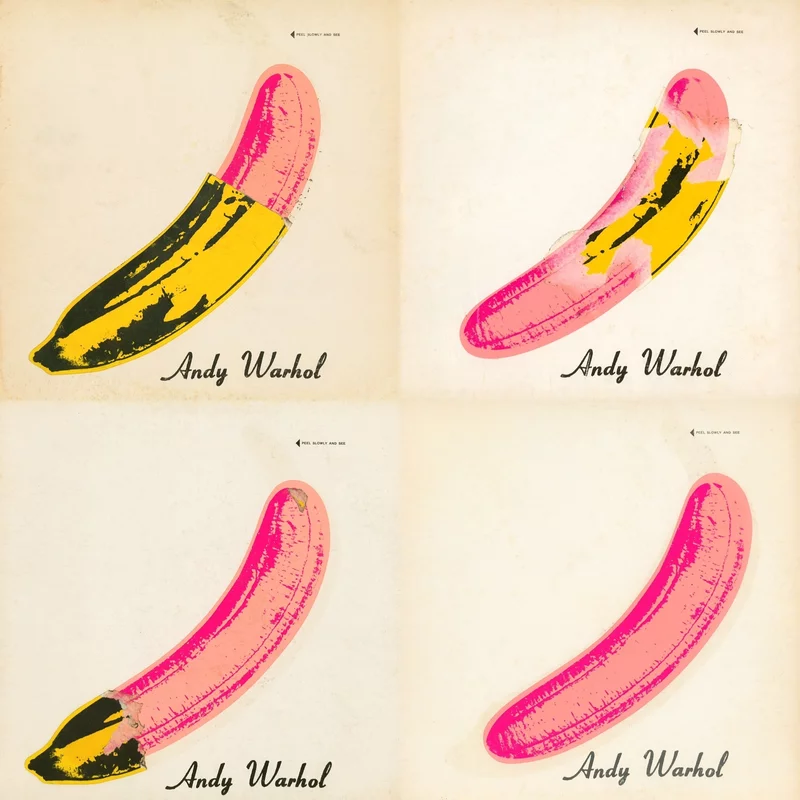
Other, non-musical artists – writers, painters, sculptors, etcetera were also profoundly influenced by their music. Whether that influence was positive or negative is an open question.
But, as Lou Reed was once quoted, “I don’t know anyone who cares what a critic says.”
Their first album, 1967’s The Velvet Underground & Nico, stands the test of time as one of rock’s most influential records. And yet, it could have easily been the album that never was. The Velvets’ harsh cacophony of sound – drones, dissonance, feedback, and distortion – was a far cry from the peace-and-love musical movements sweeping the counterculture during that famous Summer of Love. The Velvet Underground was different, darker, deeper. Their lyrics explored the unseen, wild side of urban life: drug use, S&M, paranoia, pornography, prostitution, homosexuality, madness untreated, and the consequences of having tightly held, aberrant beliefs that do not conform to society’s standards or come with a moral compass.
The principal songwriters were Reed and Cale. Reed played guitar and bass. Tucker set the beat with Sterling Morrison on guitar. Cale played everything. As far as crafting commercial pop hits was concerned, they defiantly, deliberately stood against everything rock was, or purported to be, at that time. “We had this opportunity to do something revolutionary – to combine avant-garde and rock and roll, to do something symphonic. No matter how borderline destructive everything was, there was real excitement there for all of us. We just started playing and held it to the wall. I mean, we had a good time,” Reed waxed about the zeitgeist of his age.
The relationship between Warhol and the Velvets seems obvious in retrospect; solidified in the popular imagination by that iconic banana on their first album cover (and later the box set). But what other elements were really at work? What appeal did one have for the other? Who was influencing whom here? Warhol’s artistic pop sensibility seems antithetical to what The Velvets were trying to do – destroy pop music. As rock critic Ellen Willis described The Velvet Underground, they were “too overtly intellectual, stylized, and distanced to be commercial; their work was “anti-art made by anti-elite elitists.” The same might be said about Warhol’s most famous images: familiar subjects like the Campbell’s soup can or Marilyn Monroe’s face made unique through repetition were rendered cold, somehow, and not like pop at all. “Andy and us, were cut from somewhat the same cloth,” Reed said, “and we wanted to shake people up a little bit.”
The long shadow of Warhol’s name – a name featured prominently on the band’s album cover and spine, caused some confusion over who the actual players were – proved too much to overcome. “‘Produced by Andy Warhol,’” Reed once griped. “It was like being a soup can.” Still, without his help, the can might never have been opened at all.
For all its juvenile petulance, the band wanted genre-defining influence, and over time, they got it in spades. The trappings of Velvet-style disaffection have become a consumerist aesthetic. Every year new musicians show that some fundamental resources – noise, stupor, antipathy, alienation – can’t be hijacked or lose their potency. “I’ve been set free, and I’ve been bound,” Reed once sang, knowing that art can make both of those things happen at once.[4]
In 2004, The Velvet Underground were ranked number 19 on Rolling Stone‘s list of the “100 Greatest Artists of All Time”. The New York Times wrote that the Velvet Underground was “arguably the most influential American rock band of our time”.
Today, after almost sixty years, The Velvet Underground maintains its influence over artists, writers, musicians, and the music other creative types because, eventually, the depth of their time-tested genius was recognized by prominent people and introduced them to the masses (like the influencers of the modern age). Dylan Jones’s Loaded gives fans a taste of the sounds and darkly insightful lyrics that the captured the attention of 1960’s AM-radio listeners, how Western culture at large never fully accepted their music, and explores the legacy of a complex group of artists who reimagined rock and roll as art for the rest of us to enjoy.
- https://www.goodreads.com/quotes/923369-the-first-velvet-underground-album-only-sold-10-000-copies-but ↑
- https://poppodiumboerderij.nl/en/nieuws/verhaal-achter-de-platenhoes-the-velvet-underground-nico-1967-the-velvet-underground/#:~:text=It%20is%20one%20of%20the,an%20elaborate%20joke%20from%20Warhol. ↑
- Documentary by Todd Haynes, quoted in The New York Post, October 25, 2021
- ↑
- https://www.theatlantic.com/culture/archive/2021/10/velvet-underground-todd-haynes-documentary/620408/ ↑



